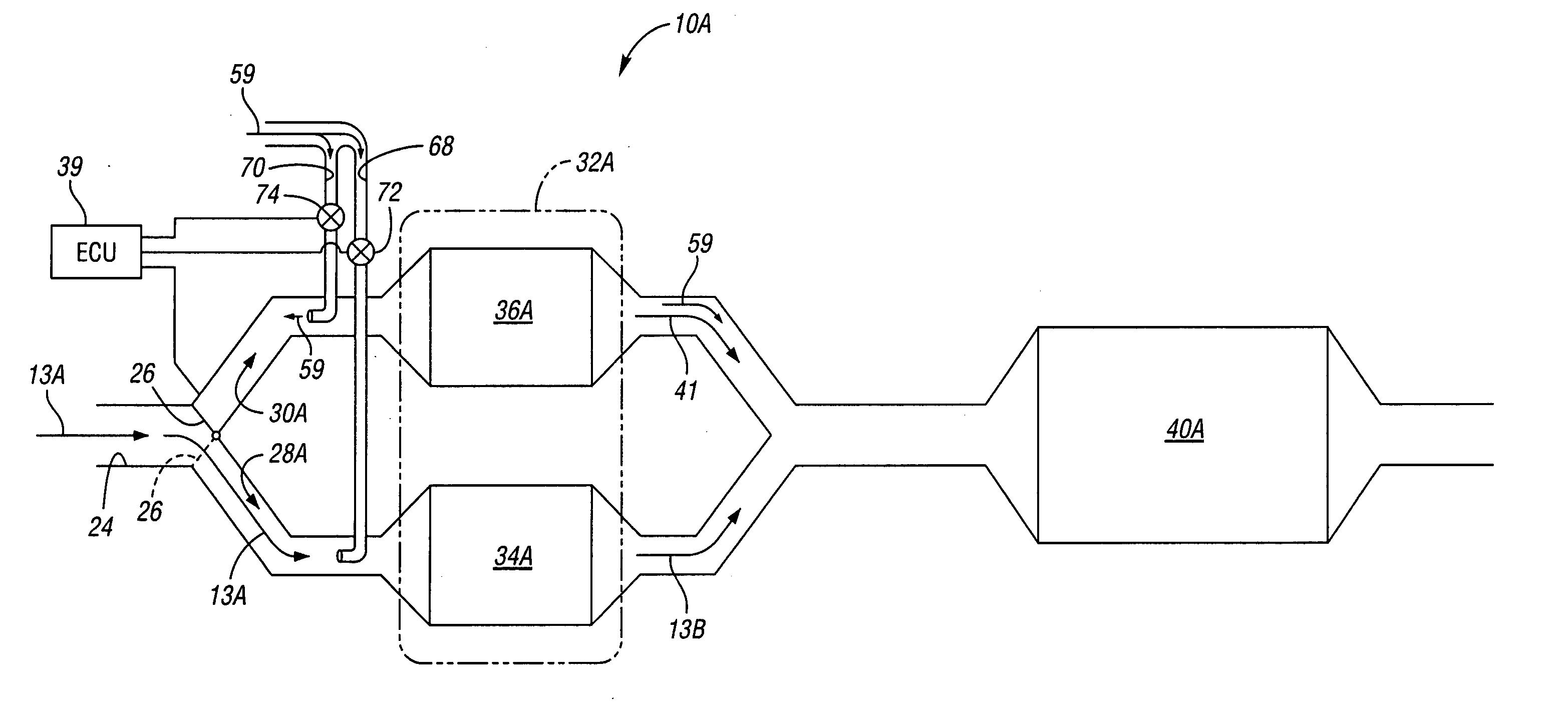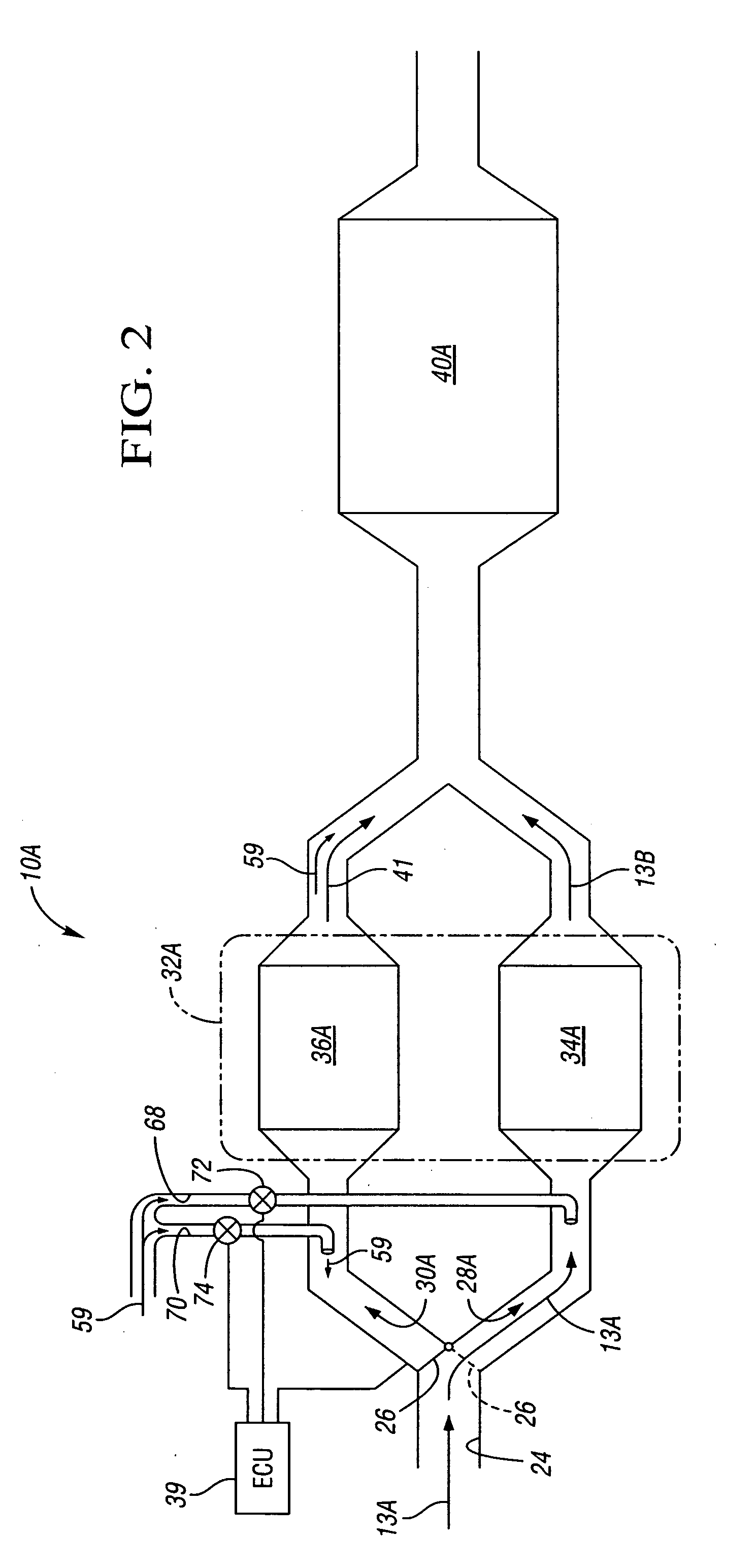Exhaust aftertreatment system and method of use for lean burn internal combustion engines
an exhaust aftertreatment and internal combustion engine technology, applied in the direction of machines/engines, mechanical equipment, chemistry equipment and processes, etc., can solve the problems of ineffective reducing agents of combustion and the need for aftertreatment systems
- Summary
- Abstract
- Description
- Claims
- Application Information
AI Technical Summary
Benefits of technology
Problems solved by technology
Method used
Image
Examples
Embodiment Construction
[0018] Referring to the figures wherein like reference numbers represent like or similar components throughout the several views, there is shown in FIG. 1 an exhaust aftertreatment system 10 consistent with the present invention. A lean burn internal combustion engine 12 communicates products of combustion or exhaust gas 13 to a turbo charger 14 though a first and second exhaust manifold 16 and 18, respectively. The internal combustion engine 12 may be a compression ignited diesel engine or another type of lean burn engine known in the art. Upon exiting the turbocharger 14, the exhaust gas 13 passes through a passage 20 into a closely coupled diesel oxidation catalyst, or DOC 22, where hydrocarbon (HC) and carbon monoxide (CO) emissions are oxidized, nitric oxide (NO) is converted to nitrogen dioxide (NO2), and some reduction of oxides of nitrogen (NOx) occurs, usually less than 20%. At the exit of the DOC 22, exhaust gas 13A is communicated to a passage 24 for subsequent communicat...
PUM
 Login to View More
Login to View More Abstract
Description
Claims
Application Information
 Login to View More
Login to View More - R&D
- Intellectual Property
- Life Sciences
- Materials
- Tech Scout
- Unparalleled Data Quality
- Higher Quality Content
- 60% Fewer Hallucinations
Browse by: Latest US Patents, China's latest patents, Technical Efficacy Thesaurus, Application Domain, Technology Topic, Popular Technical Reports.
© 2025 PatSnap. All rights reserved.Legal|Privacy policy|Modern Slavery Act Transparency Statement|Sitemap|About US| Contact US: help@patsnap.com



